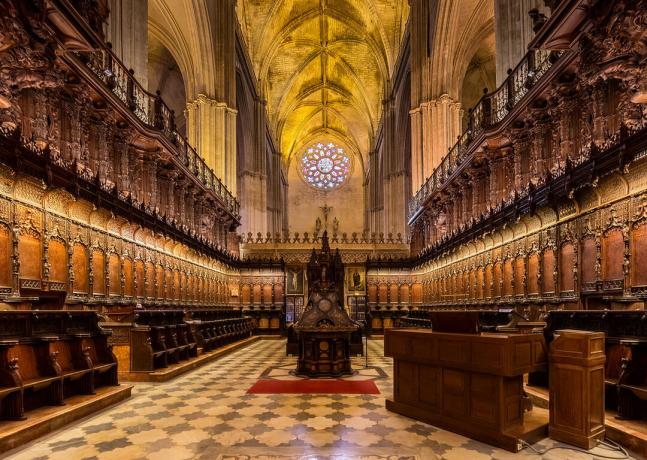Expressionism was a artistic movement through which authors expressed emotions and feelings through their works. This expression occurred in an exaggerated, depraved and subversive way, and with levels of pessimism.
Themes such as loneliness, misery and madness were frequently discussed. Check out the main characteristics of expressionism below:
1. Use of intense colors

Fränzi in front of a carved chair (1910), by Ernst Ludwig Kirchner
One of the main characteristics of expressionism is the use of strong and vibrant colors, often unreal, that is, not representing reality directly.
2. Thick and distorted strokes
The expressionist works presented strong and well-defined features however, there was no linearity in the contours.
The lines had twisted shapes, were somewhat aggressive, and did not accurately determine the shape's contour.
The strokes were thick and angular.
3. Focus on subjective aspects

Starry Night (1889) by Van Gogh.
Expressionist art is dramatic and subjective art, which reflects the perception, emotions and feelings of its author about the subject portrayed.
The table above, for example, of van gogh, reflects the artist's perception of what he saw through his bedroom window when he was hospitalized in the Saint-Rémy-de-Provence asylum.
Not all components of the work could actually be seen through the window. Some images added by Van Gogh, such as the village, were imaginary and subjective, that is, they were related to the artist's own reference elements.
Some scholars consider that the village depicted in the painting represents the place where Van Gogh spent his childhood.
4. Tragic view of the human being
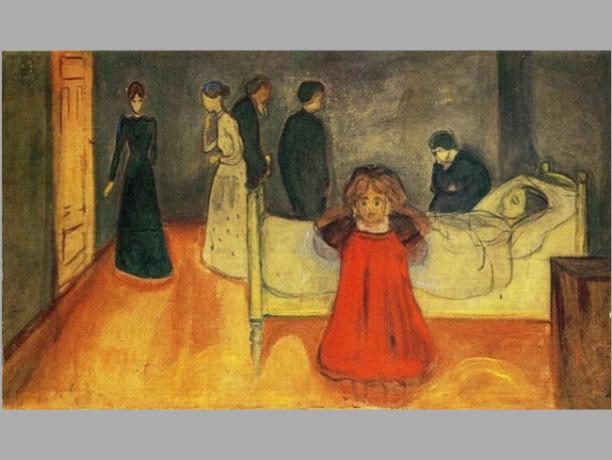
the dead mother and the child (1899), by Edvard Munch
The fact that expressionism is a subjective art form allowed the authors of the works to portray their respective views on life.
This form of expression often addressed more dramatic issues of human feelings, such as fear, loneliness, jealousy, misery, prostitution, etc.
Sometimes situations about life, death and the spiritual world were portrayed.
5. Exposure to the pessimistic side of life
One of the main characteristics of expressionism was the portrayal of intense emotions.
There were no major concerns about standards of aesthetic beauty. Often, the works reflected the emotional and mental states of the artists who, through their art, expressed a pessimistic approach to the reality they lived.
This pessimism was mainly attributed to the historical moment that humanity was going through and which was reflected in a great sense of anxiety before, during and after World War I World.
6. World reality warping
The reality exposed by expressionist artists was not governed by an idea of objectivity.
Bearing in mind that subjectivity is one of the main characteristics of expressionism, the artists from this European avant-garde felt free to present reality according to their own perception.
The main purpose of this representation was prioritize emotions and feelings at the expense of an objective description of reality.
7. expression of individual freedom
The expressionist movement defended individual freedom through the irrationalism and of the subjectivity.
Subjectivity allowed the knowledge of everything that was external to the artist to take place in accordance with his own references.
Irrationalism, in turn, as its name indicates, is opposed to what is rational.
The concept of irrationalism defends that the capacity for learning is superior when man goes beyond the limits imposed by what is rational.
know more about subjectivity.
8. Use of three-dimensionality in works

girls on the pier (1899), by Edvard Munch
Expressionist artists used to make use of three-dimensionality in their works.
However, this effect was achieved in an illusory way, that is, there was no real relief in the works. The illusion was intentionally created through the lines.
Top artists of expressionism
Check out who the main expressionist artists were.
Edward Munch
Considered one of the forerunners of expressionism, his most emblematic work The Scream.
Munch's works portrayed in a very explicit way the distorted reality, so typical of expressionism.
In the table below, for example, we can see a face without defined shapes and a sinuous body.
Another characteristic that is very present in Munch's expressionist paintings is the expression of fear, pain and suffering that the beings portrayed reflect.
There are those who attribute the expression of these details to the suffering life of the painter who, while still young, was devastated by the premature death of her mother and a sister, and the psychological disorders she presented in her age adult.
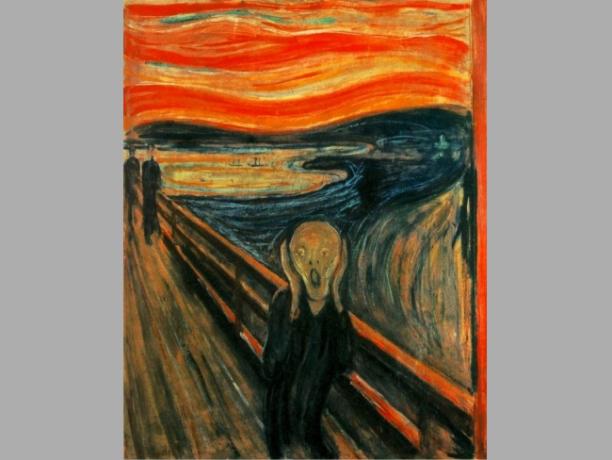
The Scream (1893), by Edvard Munch
van gogh
In his art, he portrayed human beings and nature, painting what he felt and not necessarily what he saw.
Besides the Starry Night, one of his main works was Wheat field with crows.
This work turned out to be Van Gogh's last painting. In it, it is possible to observe the strong stroke of the brush and the subjective representation of feelings and perception of reality, both typical of expressionism.
It is said that the menacing sky, the crows and the dead end convey the painter's idea that he was already at the end of his life.

Wheat field with crows (1890), by Van Gogh
Gauguin
Gauguin's paintings were characterized by stylized dimensional forms and allegorical nature.
Gauguin not only made the traditional expressionist use of bright colors, he also used them in a representative way to express his feelings.
In one of his most famous paintings, yellow Christ, the use of colors was intended not for logical representation, but for the symbolism of a feeling of peace.
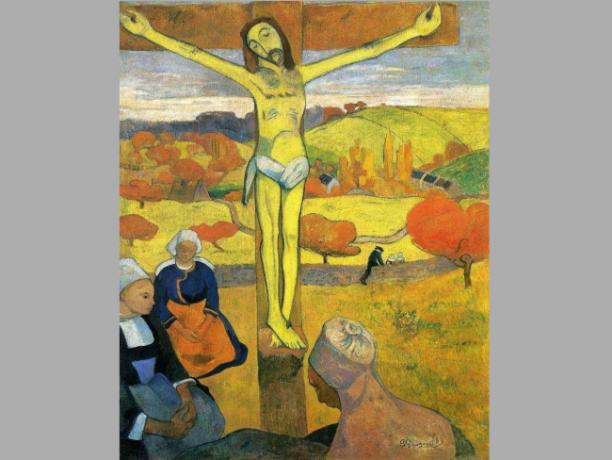
yellow Christ (1889), by Gauguin
Expressionism in Brazil
Brazil had two outstanding expressionist artists:
Cândido Portinari
The artist's works were known for representing the difficulties of the northeastern people and the exploitation of human beings by the elite.
The artist used to paint people with very large feet, exhibiting a deformation of reality, as was characteristic of expressionism.
This exaggerated representation was intended to demonstrate the close relationship between human beings and the land.
One of his main works was the coffee farmer.
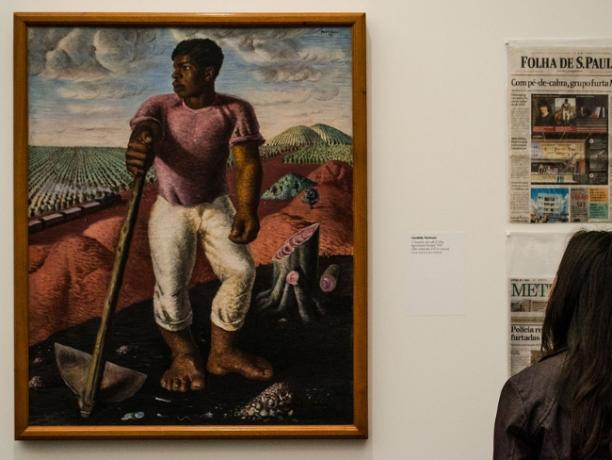
Frame the coffee farmer (1934) exhibited at MASP (São Paulo, Brazil)
Anita Malfatti
Anita Malfatti's works were known for featuring nude portraits, landscapes and everyday scenes.
One of his main works was The Man of Seven Colors.
The influences of expressionism are evidenced in the artist's works through the use of strong colors.
In the table below, for example, we can also notice the distortion of reality expressed through a representation of the human being that nothing resembles a real human.
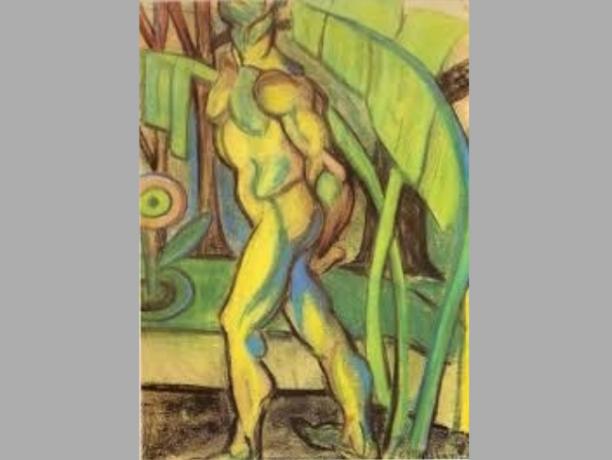
the man of seven colors (1916), by Anita Malfatti
Learn more about Expressionism.



